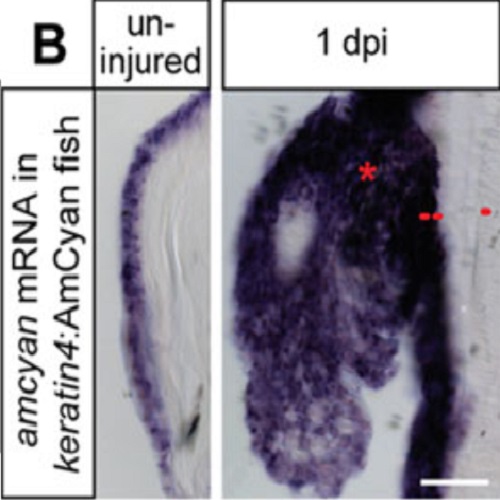Mature osteoblasts dedifferentiate in response to traumatic bone injury in the zebrafish fin and skull.
Zebrafish have an unlimited capacity to regenerate bone after fin amputation. In this process, mature osteoblasts dedifferentiate to osteogenic precursor cells and thus represent an important source of newly forming bone. By contrast, differentiated osteoblasts do not appear to contribute to repair of bone injuries in mammals; rather, osteoblasts form anew from mesenchymal stem cells. This raises the question whether osteoblast dedifferentiation is specific to appendage regeneration, a special feature of the lepidotrichia bone of the fish fin, or a process found more generally in fish bone. Here, we show that dedifferentiation of mature osteoblasts is not restricted to fin regeneration after amputation, but also occurs during repair of zebrafish fin fractures and skull injuries. In both models, mature osteoblasts surrounding the injury downregulate the expression of differentiation markers, upregulate markers of the pre-osteoblast state and become proliferative. Making use of photoconvertible Kaede protein as well as Cre-driven genetic fate mapping, we show that osteoblasts migrate to the site of injury to replace damaged tissue. Our findings suggest a fundamental role for osteoblast dedifferentiation in reparative bone formation in fish and indicate that adult fish osteoblasts display elevated cellular plasticity compared with mammalian bone-forming cells.

- Development 2014 Jun 12;141(11):2225-34
- 2014
- Developmental Biology
- 24821985
- PubMed
Enabled by:
